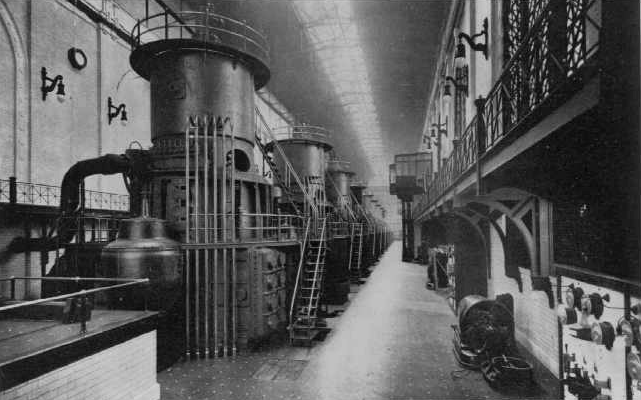History of the
Electric Generator
 Generators operate under the principles of electromagnetic induction, which were
discovered in 1831 by Michael Faraday. According to these principles, when
a conductor passes through a magnetic field, a voltage is induced in the
conductor. He discovered this when he passed copper wire across a magnetic
field. Soon after this discovery, hand-cranked versions of basic
generators were being developed.
Generators operate under the principles of electromagnetic induction, which were
discovered in 1831 by Michael Faraday. According to these principles, when
a conductor passes through a magnetic field, a voltage is induced in the
conductor. He discovered this when he passed copper wire across a magnetic
field. Soon after this discovery, hand-cranked versions of basic
generators were being developed.
Even though the principles for the generator had been laid out, electric
generators remained very impractical for the next fifty years. By the late
1800's cities around the world started electrifying, mainly for the production
of light after and efficient incandescent bulb was invented by Thomas Edison in
1879. These cities were able to start electrifying with the invention of
the first practical AC motor. This allowed for the use of a transformer,
which made
 high
voltage and long power transmission possible. By the early 1900's,
electricity was considered to be the energy source of the future.
high
voltage and long power transmission possible. By the early 1900's,
electricity was considered to be the energy source of the future.
Early power plants used coal-fired steam or water to turbines that turned the
generators to produce electric power. Eventually, oil and gas engines were
also adopted by the 1960's. These engines use turbines to spin a generator
as well, but they act like jet engines since the turbines are oil or gas fired
combustion engines. The first nuclear powered generators came online in
the mid-1950's. Despite the arrival of nuclear power, fossil fuel powered
generators still account for 70% of all electricity production in the United
States.
HOME
 Generators operate under the principles of electromagnetic induction, which were
discovered in 1831 by Michael Faraday. According to these principles, when
a conductor passes through a magnetic field, a voltage is induced in the
conductor. He discovered this when he passed copper wire across a magnetic
field. Soon after this discovery, hand-cranked versions of basic
generators were being developed.
Generators operate under the principles of electromagnetic induction, which were
discovered in 1831 by Michael Faraday. According to these principles, when
a conductor passes through a magnetic field, a voltage is induced in the
conductor. He discovered this when he passed copper wire across a magnetic
field. Soon after this discovery, hand-cranked versions of basic
generators were being developed. high
voltage and long power transmission possible. By the early 1900's,
electricity was considered to be the energy source of the future.
high
voltage and long power transmission possible. By the early 1900's,
electricity was considered to be the energy source of the future.